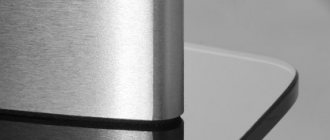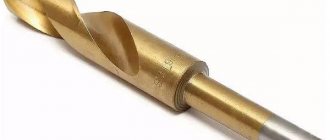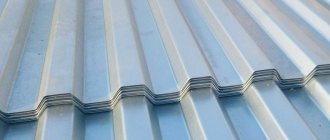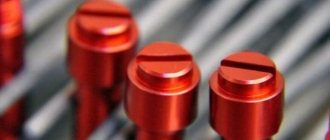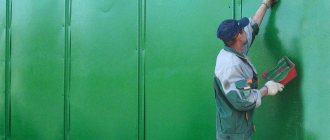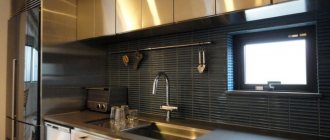What is anodizing called and why is it used?
In appearance, aluminum is a silver-white metal. But it easily oxidizes in air, reacting with oxygen, and therefore looks gray in life. The oxide film that forms on the surface is too thin and fragile to truly protect the aluminum product from the effects of the external environment.
Therefore, anodizing technology was developed - this is a process that results in the formation of an oxide film of Al2O3. It is denser and stronger than what is obtained naturally; a natural modification of the oxide is corundum, a mineral second only to diamond in hardness.
To obtain a protective layer, the metal is immersed in an acidic electrolyte solution and a direct current is passed through the system. The process is called anodizing (in other words, anodic oxidation or anodic oxidation) since aluminum acts as an anode. The technology is used when it is important to perform the following tasks:
- Maintaining the integrity and uniformity of the coating during operation (the service life of the coating is 20 years).
The coating can be given any shade Source twimg.com
- Resistance to corrosion processes at a high level.
- Preservation of external aesthetics. The coating evens out scratches, dents and other minor defects on the metal surface.
Tin-nickel alloy coating
1. The O-H(65) alloy coating is cathodic with respect to steel; recommended as a protective agent for parts to be soldered; to ensure surface hardness and wear resistance.
2. The coating has high corrosion resistance: it is resistant to conditions of high humidity and environments containing sulfur compounds.
3. The coating is highly polished, can withstand pressing into plastics, and due to its high fragility is not recommended for parts subject to flaring and impact loads.
4. Microhardness of the coating is 4900-5880 MPa (500-600 kgf/mm2).
Permissible operating temperature is 300-350°C.
Tin-bismuth alloy coating
1. Coating with O-Vi-(99.8) alloy in atmospheric conditions is cathodic in relation to steel, anodic in relation to copper and its alloys containing more than 50% copper; recommended as a protective agent for parts to be soldered.
2. Corrosion resistance and pinning tendency are the same as tin plating.
3. The coating withstands flaring, stamping, press fits well, and is preserved during screwing.
Where is anodized metal used?
The technology has improved the original properties of the metal. Anodized aluminum is used in a wide variety of technical fields and allows you to achieve different goals, for example:
- Corrosion protection of architectural structures. Aluminum structures gained popularity in the 1960s, and anodizing soon replaced liquid painting. The standard layer thickness in different countries is 15-25 microns, depending on environmental conditions.
- Use of reflective properties. The shiny surface has found application in various fields of technology, from thermal reflectors (in heating reflectors), to spotlight reflectors and lighting elements. A layer 1-2 microns thick easily tolerates high humidity and temperature.
Reflective properties are in demand in the production of floodlights Source cepolina.com
See also: Catalog of companies that specialize in finishing materials and related work
- Resist wear, reduce friction. The smooth coating significantly reduces wear and increases the hardness of friction parts. Therefore, a layer up to 60 microns thick is used to coat parts of mechanisms and engines.
- Creation of a dielectric film. An electrical insulator in the form of an anodized aluminum layer is used in electrolytic capacitors and in some types of transformers.
- Particularly hard microfilm has found application in aircraft and shipbuilding, and in construction (building profiles).
- Oxide films are needed in the production of heating and cooling devices.
- Improving product quality. Anodizing an aluminum window profile improves its appearance, masks minor defects, that is, improves the quality of the product.
- Variety of designs. The process allows you to obtain anodized coatings of different colors (including imitation bronze, silver, gold). This increases the attractiveness of products (for example, hinges, handles, balustrades) and allows them to fit more accurately into the interior.
Aluminum sheets in matte silver, bronze, gold Source aeroexpo.online
- Maintaining cleanliness. A stepladder made of unprotected aluminum will get your hands dirty. Therefore, manufacturers usually strive to protect products such as handles, railings, and knitting needles with an anodic coating.
Purpose of cathodic protection
Cathodic protective coatings are relevant for many metals. In particular, for zinc, tin, aluminum, titanium, copper. And also for certain types of steel.
What about their areas of application, they include:
- large tanks;
- pile foundations (for the construction of roads and buildings);
- reinforcement in structures made of iron and concrete;
- berths and bridge supports;
- some parts of ships (for example, their bottoms);
- and, among other things, pipelines for oil and gas.
Hard anodizing technology
In factory conditions, special equipment (for example, an automatic galvanic line) is used to anodize aluminum; the technology includes the following stages:
- The product is prepared in two ways, mechanical and electrochemical. The surface is sanded and degreased. Then the metal is brightened by immersing it successively in alkali and acid. At the end, the product is washed.
- The workpiece is hung on brackets and immersed in a bath with electrolyte and cathode. The process occurs at certain current parameters.
- After anodizing, the new layer appears porous and needs to be sealed. To do this, two methods are used: immerse the workpiece in fresh boiling water or in a solution with a special composition. Consolidation improves the performance properties of aluminum.
Industrial method of anodic oxidation Source diy.obi.ru
Products by topic
- Choose …
View
Street bars
27950 ₽ – 41600 ₽
- Choose …
View
Horizontal bar
17550 ₽ – 39000 ₽
- Add to cart
View
Bench with stops
26950 ₽
- Add to cart
View
Swedish wall
35900 ₽
- Add to cart
View
Inclined bench for abdominal exercises
27950 ₽
- Add to cart
View
Workout complex VK-003
151500 ₽
- Add to cart
View
Workout complex VK-001
132500 ₽
- Add to cart
View
Workout complex VK-002
82200 ₽
- Add to cart
View
Workout complex VK-004
137800 ₽
- Add to cart
View
Workout complex VK-005
98800 ₽
- Add to cart
View
Single handle bar
54500 ₽
- Add to cart
View
Parallel bars
9750 ₽
Warm anodizing
An alternative method for obtaining a shiny layer is warm anodizing, which can be done in a home workshop. The method has the following features:
- At home, it is impossible to accurately maintain the set temperature and other conditions during the electrolytic reaction.
- The anodized coating turns out to be porous, which is good if you plan to paint the product.
- The layer is not strong enough, it can be destroyed during operation under the influence of external agents (for example, sea water), it is easy to scratch, and it has low resistance to abrasion.
The work is performed at room temperature (on average 15-20°C, but not more than 40°C). The stages of work repeat the factory technology. The part is fixed on a suspension, degreased (for example, in nitric acid), washed in distilled water and lowered into an oxidation solution.
Anodizing an aluminum part at home Source ytimg.com
Nickel chemical plating
1. Chemical nickel coating containing 3-12% phosphorus has better protective properties compared to electrochemical nickel coating, the coating has increased hardness and wear resistance and is recommended for parts operating under friction conditions, especially in the absence of lubrication; used for corrosion protection, to ensure soldering with low-temperature solders.
The coating is highly brittle; bending and flaring of hoists with chemical nickel coating is not recommended.
2. The coating is recommended to be used primarily for complexly profiled parts.
3. After heat treatment at a temperature of 400°C, the coating acquires high hardness.
4. Microhardness of the coating after heat treatment - 6400-11800 MPa (650-1200 kgf/mm2);
resistivity at a temperature of 18°C - 6.8 10-7 Ohm m.
Cold anodizing
Technologically, the process is similar to the previous option, the only difference is that such anodization occurs at a low temperature, in the range from -10 to +10 °C. The advantage of this method is that the protective film is thick and durable. The cold environment acts so that the layer grows faster on the inside than it dissolves on the outside.
The processed product is highly resistant to corrosion. The technique has a drawback - it is almost impossible to qualitatively paint anodized metal with organic compounds.
Painting improves the quality and aesthetics of the surface Source gidpokraske.ru
Copper plating
1. Copper coating is cathodic to steel, aluminum, magnesium and zinc alloys. The coating is used as a technological sublayer to reduce porosity and increase the adhesion of other coatings. It is not recommended as a stand-alone coating for protection against corrosion due to low corrosion resistance.
2. Copper coating has high electrical and thermal conductivity, ductility, withstands deep drawing, flaring, is well polished, facilitates running-in, lapping and screwing; in a freshly deposited state it solders well. With low-temperature solders it forms intermetallic compounds, which sharply worsen the solderability and strength of the soldered joint.
3. Permissible operating temperature of the coating is 300°C; coating microhardness - 590-1470 MPa (60-150 kts/mm2);
resistivity at a temperature of 18°C - 1.68 10-8 Ohm m.
Briefly about the main thing
Anodizing aluminum improves and expands the performance characteristics of the metal. The essence of the process is the growth of an oxide film, the properties of which depend on the method of its preparation. In industrial conditions, hard anodizing is used, the oxide coating is durable and wear-resistant.
Warm anodizing allows you to obtain a not very strong porous structure, which, however, has good adhesion and can be painted with high quality. The result of the cold method is a thick layer of oxide with high anti-corrosion properties.
Ratings 0
Cadmium coating
1. The cadmium coating is anodic and protects steel from corrosion in the atmosphere and seawater electrochemically; in fresh water - mechanically.
2. To increase corrosion resistance, the cadmium coating is chromated and phosphated. Chromating simultaneously improves the decorative appearance of the coating. Chromate film is mechanically fragile.
The corrosion rate in an industrial atmosphere is 1.5-2 times higher than that of zinc coating.
3. Without chromating and phosphating, the coating is used to ensure electrical conductivity when crimping with plastics at temperatures above 100°C.
4. The coating is not recommended for use on parts operating in the atmosphere of industrial areas; in contact with fuel containing sulfur compounds; in an atmosphere containing volatile aggressive compounds released from organic substances during aging: when drying oil, oil varnishes, etc. dry.
5. Electrochemical cadmium plating causes a loss of ductility in steels due to hydrogenation. For parts made of steel with a tensile strength higher than 1370 MPa (140 kgf/mm2), cadmium plating using a special technology is allowed.
6. The coating has strong adhesion to the base metal, good anti-friction properties, and low wear resistance; more ductile than zinc; withstands pressing, drawing, flaring, screwing. Cadmium oxides are toxic.
Welding on cadmium coating is not allowed.
7. Microhardness of cadmium coating -340-490MPa (35-50kgf/mm2); resistivity at a temperature of 18°C - 10.98 10-8 Ohm m.
Rhodium plated
1. Rhodium coating is cathodic in relation to the metals being coated.
2. The coating is recommended to be used to ensure stable electrical parameters of parts of contact devices and increase the reflectivity of the surface.
3. The coating has high wear resistance, electrical conductivity, and reflectivity.
Reflection coefficient - 76-81%.
The coating is not subject to welding, is resistant to most corrosive environments, including hydrogen sulfide, and does not oxidize up to a temperature of 500°C.
4. A coating with a thickness of 1.0 µm has practically no pores; with a thickness of more than 3 µm it is prone to the formation of microcracks.
5. Coating microhardness - 3920-7840 MPa (400-800 kgf/mm2);
resistivity at a temperature of 18°C - 4.5·10-8Ohm·m;
internal stresses reach 1670 MPa (170 kgf/mm2).
Gold-nickel alloy plating
1. Coatings with alloys Zl-N (99.5-99.9), Zl-N (98.5-99.5), Zl-N (93.0-95.0) are cathodic in relation to the metals being coated and protect them mechanically. The corrosion resistance of gold-nickel alloy and functional purpose are the same as gold plating.
2. The coating is characterized by high electrical and thermal conductivity, high hardness, increased wear resistance, lack of tendency to weld, and low internal stresses; It is characterized by chemical resistance in various aggressive environments and retains its characteristics stable over time.
3. The nickel sublayer creates favorable operating conditions for friction coatings, prevents diffusion of the base metal at temperatures up to 350°C, and promotes the stability of contact resistance.
4. With tin-lead solders, the coating forms brittle intermetallic compounds, which reduce the mechanical strength of the solder joint.
Silver plating
1. Silver coating is cathodic in relation to the metals being coated; recommended to ensure low contact resistance, to improve surface electrical conductivity.
2. The coating is characterized by high electrical and thermal conductivity, plasticity, and reflectivity; low hardness, resistance to mechanical wear and internal stresses; tendency to weld.
The coating withstands bending and flaring well, but does not tolerate crimping into polymer materials.
The coating is subject to migration along the dielectric surface under the influence of potential differences.
Gloss formers in coating electrolytes can negatively affect the electrical conductivity of the coating.
3. It is not allowed to use silver coating as a sublayer under gold due to the diffusion of silver through gold with the formation of surface non-conducting films (When using products with electrical contacts with gold coating on a silver sublayer, instability of the contact resistance up to failure is possible due to the diffusion of silver through gold ).
4. Under the influence of chlorine compounds, ammonia, sulfur-containing, phenol-containing, etc. substances, a film is formed on the surface of silver and silver-containing coatings, which increases the contact resistance of the coating and makes it difficult to solder.
5. Microhardness of the coating - 883-1370 MPa (90-140 kgf/mm2), which over time can decrease to 558 MPa (60 kgf/mm2);
resistivity at a temperature of 18°C - 1.6·10-8Ohm·m.
